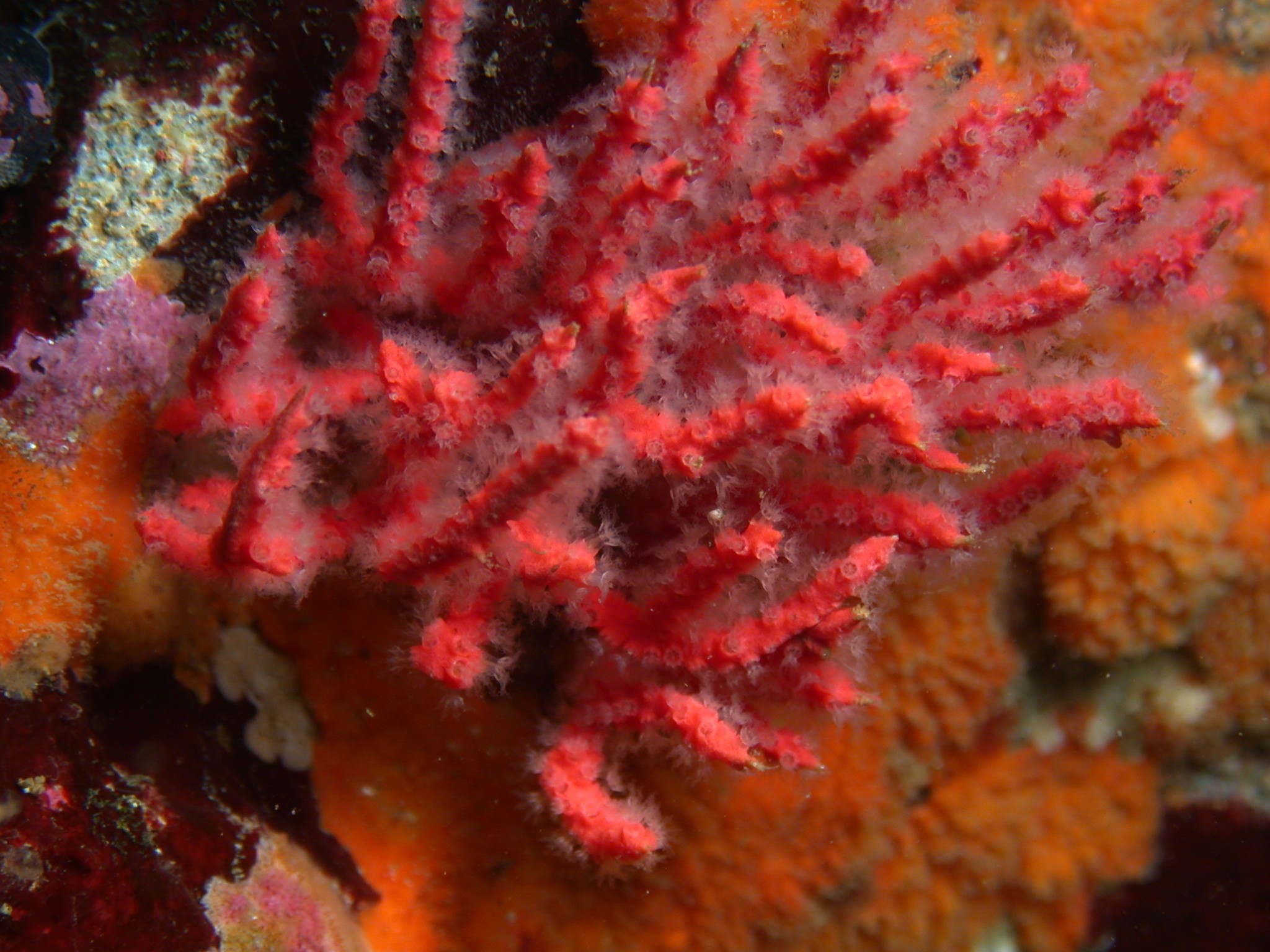New Fiery-Red Coral Species Discovered in Peruvian Pacific

In the clear waters off the coast of Peru, researchers have found a stunning new red coral species that was not previously described by scientists.
The corals' hand-size colonies were discovered at water depths of about 82 feet (25 meters), near Isla San Gallán in Peru's Paracas National Reserve. Small pieces of the coral were also found attached to mussels from Independence Bay, at a fish market nearby. [In Images: Fiery-Red Coral Species Discovered in Peruvian Pacific]
The new species' small size and intensely red color — along with other attributes, such as the shape of the coral polyps — distinguish this coral species from its relatives, according to the study.
"I think I am privileged to work with something so pretty," study researcher Odalisca Breedy, a researcher and professor at the University of Costa Rica, told Live Science.
The researchers named the new species Psammogorgia hookeri, after Yuri Hooker, a biologist and naturalist from the Cayetano Heredia Peruvian University in Lima. [Colorful Creations: Incredible Coral]
To determine whether the samples they found were, indeed, a new species, the researchers examined the corals with microscopes, and compared them with specimens at Peru's Ocean Institute (IMARPE) and the Yale Peabody Museum of Natural History.
"This new species may be found nowhere else in the world," study co-author Héctor Guzmán, a researcher at the Smithsonian Tropical Research Institute in Panama, said in a statement. "But coral reefs and coral communities in Peru have never been systematically studied. We expect more surprises as we look at new collections."
Get the world’s most fascinating discoveries delivered straight to your inbox.
Breedy and Guzmán both specialize in soft-coral research, and so far, they have discovered 25 new species of soft coral in the Pacific.
The discovery of new coral species can help bolster conservation efforts, Breedy said. "If you have the knowledge of the species, you can plea for conservation if it is a species endemic to the site," she said.
"My goal is to find more species before they are gone because of all the contamination," Breedy added. Ocean contamination can be caused by several factors, including the build-up of sediments, increasing acidity and natural disturbances such as El Niño, she said. "At the current rate, it is very possible that many species will be extinct before scientists are able to describe them," she said.
The study detailing the new species was published in the Journal of the Marine Biological Association of the United Kingdom.
Follow Agata Blaszczak-Boxe on Twitter . Follow Live Science@livescience, Facebook & Google+. Original article on Live Science.


